Generally, the 100 MHz default speed of the PCIe should be maintained if you want to have a stable system. However, it is a given fact that increasing the PCIe clock speed to a higher number, such as 110 MHz, can improve the performance – albeit it may result in system crashes.
Overclocking is simply the process of increasing a device’s clock rate. This makes it run much faster, increasing the number of operations it can do in a second.
While overclocking the CPU is standard, you can also overclock the PCIe slot. On the specific motherboard, you can change the PCIe frequency. Please read on to determine what I should set PCIe frequency when overclocking and whether increasing it is worth it.
Overclocking PCIe slot lets you increase their data transfer rates, hence performance (technically). To achieve this, you need to go above the 100MHz default speed.
This generally produces more heat, so you will need effective cooling. But another common side effect is that you can start getting crashes.
This is why you may need to test and test to find the correct frequency number. If the PCIe overclocking results in crashes, then going back to default is recommended.
TABLE OF CONTENTS
What Should I Set PCIe Frequency When Overclocking?
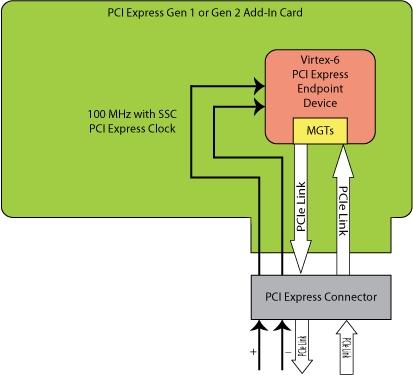
Image: PCIe default clock speed is 100 MHz. Source: Xilinx
Whenever you do an overclock, the main aim is to squeeze out more performance from your hardware.
You can also overclock the PCIe slots with the CPU and GPU. The practice of overclocking the PCIe slots is uncommon but doable.
100MHz is the defaults stable clock speed and is usually enough for most users running most tasks.
However, you can increase the clock speed if you have an overclocked processor and need to improve performance from your PCIe bus.
Also Read: How to Check if CPU is Overclocked?
Different PCIe Overclocked Frequencies:
Overclockers generally try to set the PCIe frequency between 101-120 MHz.
The higher you go, the more effects you will see.
If you are new to overclocking, I would like you to know how to move forward safely. Also, learning how to fix fundamental issues and keep your system stable during operation is needed. As there is a risk, please don’t worry about the damage to your setup.
If you are adamant about overclocking the PCIe bus, take things incrementally and gradually.
Here are some things I should side to determine what I should set the PCIe frequency when overclocking.
101-110 MHz
As I said before, you should do this in steps for more safety to see which values could be better for your system.
101-110 MHz range is typically acceptable for most overclockers. This range offers good stability for your system. You will not need to worry about getting too many crashes or the grim Blue Screen of Death (BSOD).
You may also see some performance differences from your installed card. These can be seen via benchmarks; in some cases, the benefits will be seen in real-world performance.
One of the things you may need to watch out for is temperature spikes in your system. Having an adequate supply of cooling fans should help with this.
111-120 MHz
At these high values, you may see performance improvements. However, you will also have to deal with many crashes, sometimes back to back.
The system might become unstable at these high values because your cards are now getting and transmitting more data than they are built for.
However, it is not unlikely for users to overclock to these high-frequency values and still have a stable enough system. It mainly depends on the specific design as well as how its configured.
120 MHz and Above
Some users can set the PCIe frequency values above 120 and operate fine. However, such high frequencies can be more harmful than good. You may end up doing irreparable damage not only to your card but also to the slot itself.
In some cases, if the PCIe speed is too high above its original value, you may need help writing data and files to disk. This may result in corrupted and useless files, leading to data loss.
Also Read:
How to Change / Overclock the PCIe Frequency
The PCIe bus frequency can be changed via the BIOS on your motherboard.
Depending upon your BIOS version, the settings’ location may differ.
However, what you are essentially looking for are PCIe settings. There you may find controls for the PCIe Frequency.
The following image exemplifies what to look for in your BIOS.
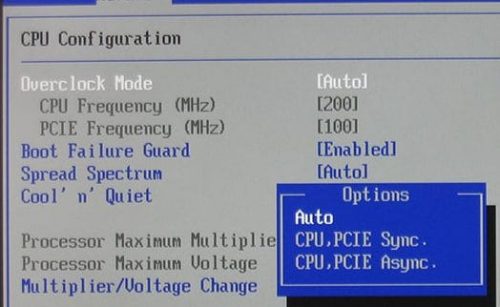
Image: PCIe frequency settings in BIOS
Benefits of Overclocking PCIe Frequency
The apparent benefit of overclocking includes increased data rates across the system.
Increasing the clock speeds can help render textures and improve the frame rate.
Furthermore, users have also noticed some significant improvements in frame rates in some very demanding games. You can even get better performance in benchmarks when using expansion cards over an overclocked PCIe bus.
A User Performance Case Study on PCIe Overclock
Here we will reference one of the user case studies on Tomshardware. The case study is, but conveyors convey the overall message.
The user overclocked the base 100 MHz frequency to a whopping 130 MHz! This is only recommended if you are worried about your system.
The following results were concluded for the two benchmarks that matter to gamers.
Dirt 2 with Ultra Settings
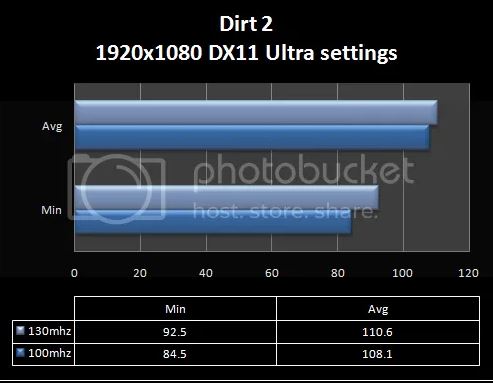
Here you can see a 2.3%.
AvP Benchmark
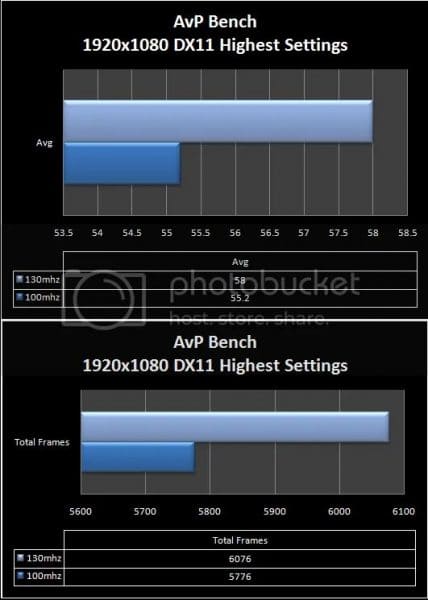
Here you can see a 5% increase in performance.
The performance difference is a bit calming, given that it comes at the cost of enormous system instability.
However, PCIe overclocking can be explored for overclockers who want to squeeze even the tiniest bit out of their gaming hardware.
Also Read:
Drawbacks of Changing PCIe Frequency
To let you know, EVERY connected peripheral on your PC relies on the PCIe bus, even the SATA controller that connects with the hard disks, sound card on the motherboard, the Wifi adapter, etc.
Therefore, an issue with the PCIe bus can result in problems for all of your system components. The worst of this issue could be data loss on your hard disks.
Overclocking any part of the computer introduces certain risks to the system, but the errors are localized on components like the CPU and GPU.
A risk involving PCIe, on the other hand, can have a trickle-down effect on the rest of your hardware.
One of the users wrote:
I ruined my old 4890 [ATI RADEON 4890], running the PCI-E Bus significantly out of spec (112mhz). – Brampton_Boy – HardForum.com
One of the things you may notice is that the system will run a bit hotter. The computer will draw in more current, producing heat in the process. The heat will need to go somewhere – preferably outside the computer.
If you do not have a good cooling solution, you may get poor performance even with a higher clock speed due to throttling, a safeguard that’s put in place to protect the components of the system from damage due to excessive heat.
But besides the overheating, the one critical and standard issue with PCIe overclocking is system crashes or the expansion cards installed failing to operate.
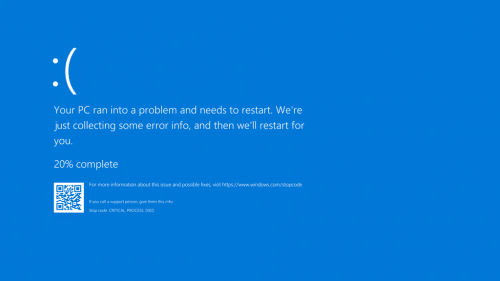
Image: Blue Screen of Death, aka BSOD, is a common issue when hardware fails.
Also Read:
- What PCIe Slot of GPU is Ideal?
- How Many PCIe Lanes Does Ryzen Have?
- Will Motherboard POST Without a CPU?
Final Words
If you are an enthusiast and adamant about overclocking your PCIe bus, I must set the PCIe frequency when overclocking so that you do not damage your PC.
A safe value means you will suffer fewer problems and enjoy slightly better performance from your hardware.
Overclocking the PCIe bus isn’t for everyone; different builds will work with different values. So, to get what value works for you, you will need to do some experimentation.
The actual number will depend on the motherboard and the chipset. Testing your frequency and increasing it in small increments will let you find a suitable and stable value for your PCIe frequency when overclocking.
Please don’t go overboard.
FREQUENTLY ASKED QUESTIONS
1. Can overclocking the PCIe frequency improve the performance of my system, and if so, how much?
Overclocking the PCIe frequency can improve the performance of your system by increasing the data transfer rate between the CPU and the graphics card.
However, the performance gain may not be significant, and it’s crucial to ensure that your system is stable and doesn’t overheat.
2. What are the risks of overclocking the PCIe frequency, and how can I mitigate them?
Overclocking the PCIe frequency can increase the risk of stability issues, system crashes, and hardware damage if done improperly. It’s essential to ensure that your system is properly cooled and that the PCIe frequency is within safe limits.
It’s also crucial to avoid setting the frequency too high or too low, as this can affect the stability and performance of your system.
3. Is it possible to damage my system by overclocking the PCIe frequency, and if so, how can I prevent this?
Yes, overclocking the PCIe frequency can potentially damage your system if done improperly or if the system isn’t adequately cooled.
Overclocking can cause the components to run hotter than normal, leading to thermal throttling, system instability, or even hardware damage.
To prevent damage, it’s important to monitor your system’s temperature and ensure that it’s within safe limits.
4. Does the optimal PCIe frequency depend on the type of CPU or graphics card that I’m using?
The optimal PCIe frequency depends on various factors, such as the CPU and graphics card’s capabilities, the motherboard’s chipset, and the cooling system’s efficiency.
Typically, the optimal frequency is between 100 and 150 MHz, but this can vary depending on the system’s configuration.
It’s important to research your specific hardware and consult the manufacturer’s documentation for guidance.
5. Are there any software tools or utilities that can help me overclock the PCIe frequency safely and efficiently?
Yes, there are several software tools and utilities available to help you overclock the PCIe frequency safely and efficiently.
These tools can monitor your system’s temperature, voltage, and frequency, and adjust the settings accordingly.
However, it’s crucial to use these tools with caution and to ensure that you’re familiar with the settings and potential risks.
Some popular tools include MSI Afterburner, EVGA Precision, and ASUS GPU Tweak.
